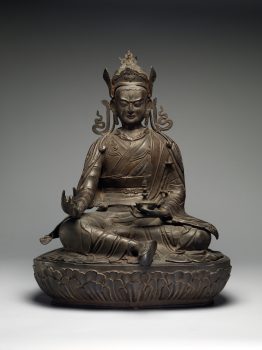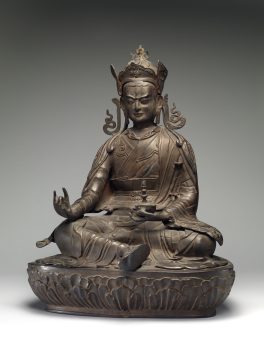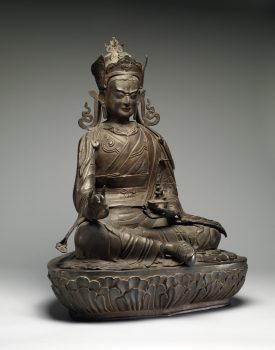Bhutan
19th century




Bhutan
19th century




A virtuous feeling and deep respect toward an authentic teaching, teacher, or path. Buddhists believe that expansive study, analysis, and meditation are essential steps for cultivating a healthy and enduring devotion.
The passing down of authentic Buddhist teachings from a teacher to a disciple or student, often in the form of a text in a ritualistic context.
The transmission of teachings from one generation to the next, from teacher to student, traced all the way back to the Buddha without interruption. A complete lineage is essential in Tantric Buddhist practices as it makes the blessings of the teaching more powerful.
Himalayan art includes portraits of legendary and historical humans, including accomplished religious teachers (lamas), the Buddha’s original disciples (arhats), and spiritually accomplished tantric masters (mahasiddhas).
Bhutan’s earliest Buddhist temples were built in the 7th century, around the same time Buddhism was introduced in Tibet. In the 17th century, Mongol-backed Geluk authorities drove many Kagyu teachers from Tibet to Bhutanese areas. The Drukpa Kagyu teacher Zhabdrung Ngawang Namgyel (1594–1651) unified these regions and established a system of government.
Get the latest news and stories from the Rubin, plus occasional information on how to support our work.